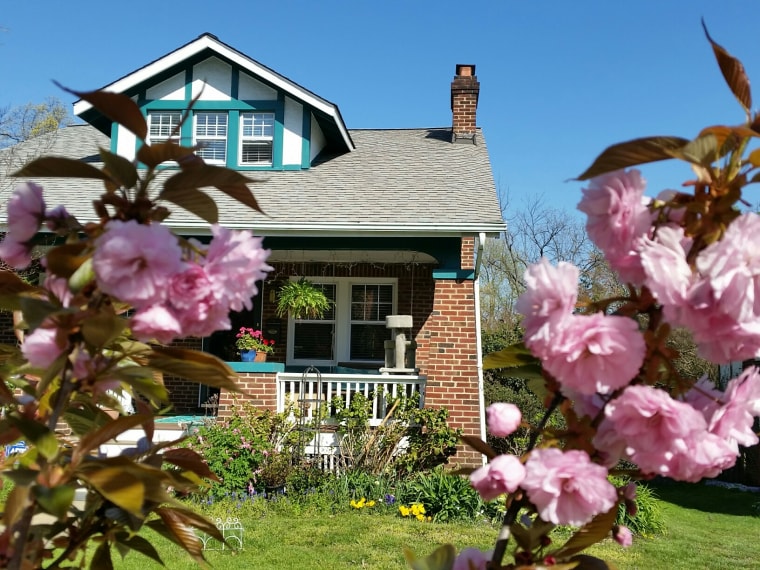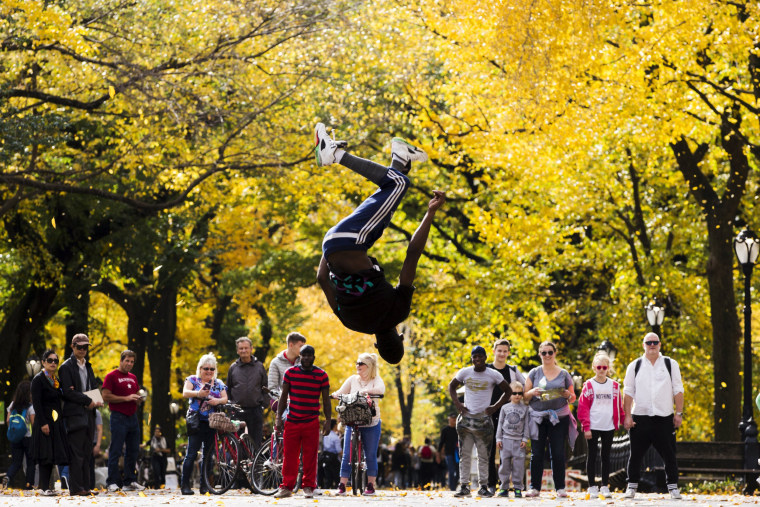Go ahead, plant a tree. It might help you live longer.
A new study shows that living in or near green spaces can be a boon for longevity, and seeing more greenery may also boost mental health, according to a team at the Harvard School of Public Health.

Women living in the greenest areas, as measured by satellite, were 34 percent less likely to die from a respiratory illness than women living in the most paved-over areas. And women living amidst greenery were 13 percent less likely to die of cancer.
“We were surprised to observe such strong associations between increased exposure to greenness and lower mortality rates,” said Peter James, a research associate who worked on the study.
“We were even more surprised to find evidence that a large proportion of the apparent benefit from high levels of vegetation seems to be connected with improved mental health.”
“Policies to increase vegetation may provide opportunities for physical activity."
The researchers looked at data, so they cannot tell the stories of those they studied. But they have a lot of numbers to back up their findings.
They used the giant, 121,000-woman Nurses’ Health Study, a gold mine of information about how women live and die across the U.S. The volunteers in the study fill out regular, detailed questionnaires about what they eat, when they exercise, how they live and what they do in their spare time
“We assessed death occurring between the return of the 2000 questionnaire and June 1, 2008. Deaths were usually reported by families,” the team wrote in their report, published online in Environmental Health Perspectives.
“We followed 108,630 women and observed 8,604 deaths between 2000-2008.”

They used satellite data to see how green each woman’s surroundings were. They divided them into five groups, called quintiles, based on how green their surroundings were.
“Women living in the highest quintile of cumulative average greenness (accounting for changes in residence during follow-up) in the 250 meter (yard) area around their home had a 12 percent lower rate of all-cause non-accidental mortality compared to those in the lowest quintile,” the team wrote.
“These associations were strongest for respiratory and cancer mortality.”
That’s not entirely surprising. Several studies show trees and other greenery can help absorb harmful air pollution and disturbing noise. Having parks or gardens nearby can encourage exercise.
And having outdoor spaces can help people socialize, too, and that can improve mental health, the researchers said.
“Studies have demonstrated that views of nature may have a direct psychological benefit.”
This doesn’t mean people have to move to the country if they aim to live to a ripe old age—“84 percent of our sample lived in urban areas,” the researchers wrote.
So even a little park can help.
“Policies to increase vegetation may provide opportunities for physical activity, reduce harmful exposures, increase social engagement, and improve mental health,” the team concluded.
“While planting vegetation may mitigate effects of climate change, evidence of an association between vegetation and lower mortality rates suggests it also might be used to improve health.”
There are limits, of course. This was a nurses’ study and only recruited female nurses. The volunteers tended to be white.
“Those living in areas with higher levels of greenness were slightly younger, more likely to be White non-Hispanic, had husbands with higher levels of education, and lived in neighborhoods with higher socioeconomic status. Areas with higher greenness had lower levels of air pollution,” the researchers said.
But even when these factors were accounted for, the association between green space and good health stayed.
“Higher exposure to greenness has been consistently linked to lower levels of depression, anxiety, and stress,” the team wrote.
“Studies have demonstrated that views of nature may have a direct psychological benefit.”
